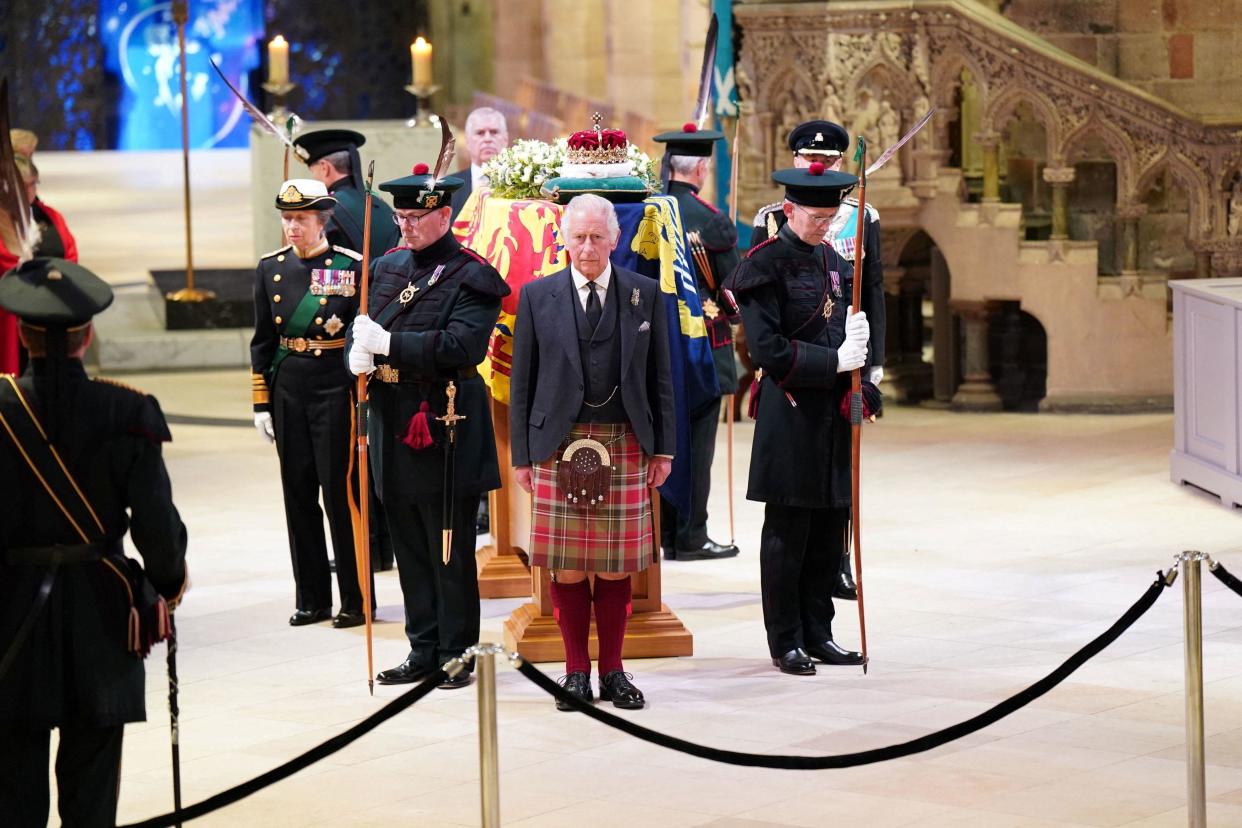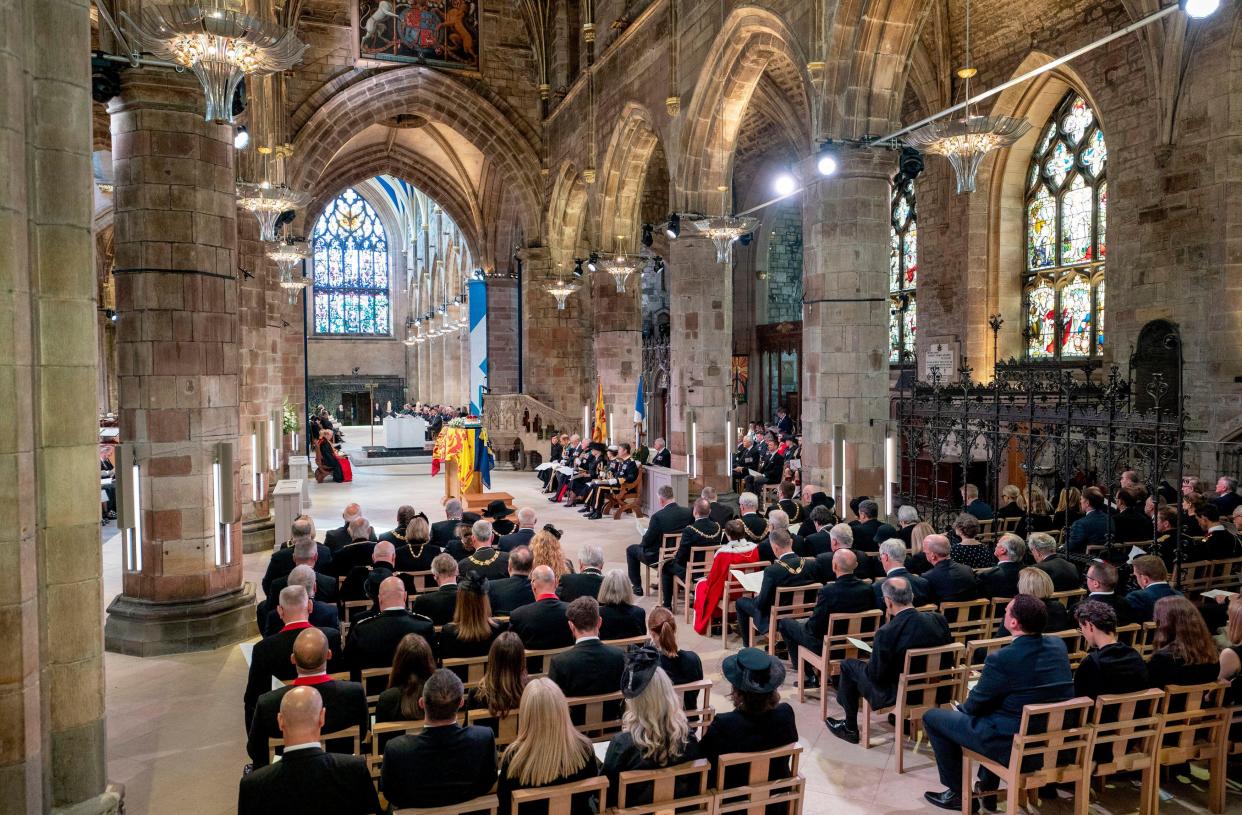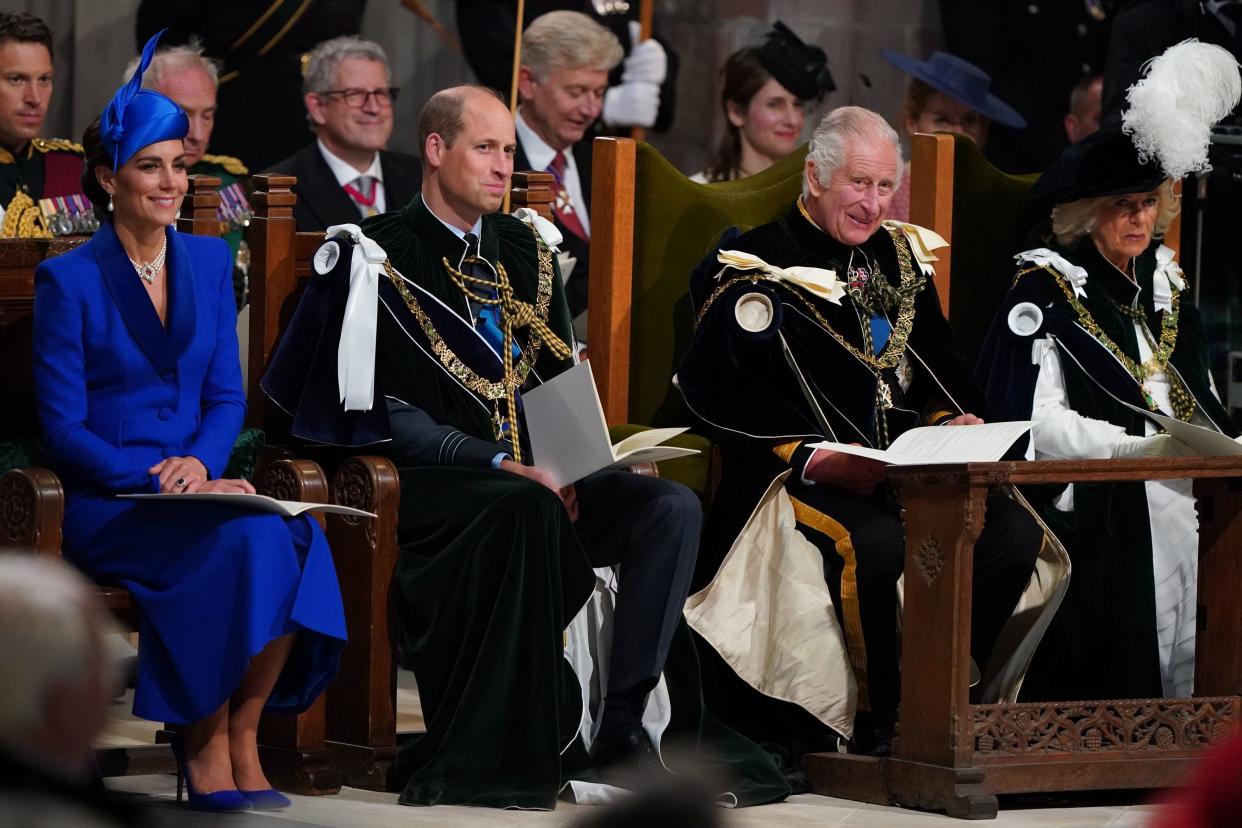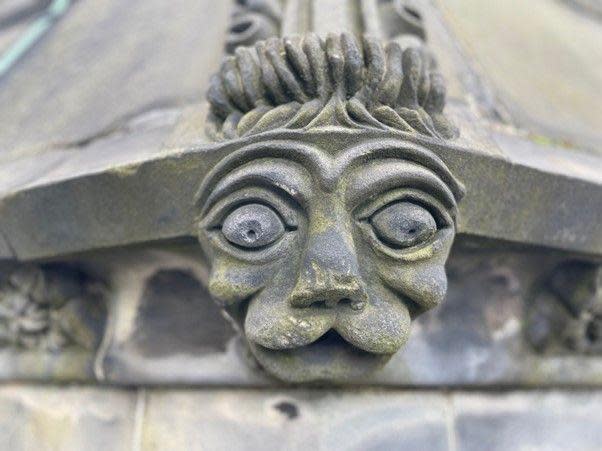St Giles': Playing a part in history for 900 years
St Giles' Cathedral sits at the heart of Edinburgh's Old Town, an architectural anchor at the centre of Scotland's capital city.
Also known as the High Kirk, it has played a major part in many of Scotland's big moments.
Celebrating its 900th year in 2024, the church has been the focus of historic and notable events from the 12th Century through to the death of Queen Elizabeth II.
We look back at some of its most interesting stories.
The death of Queen Elizabeth II

About 30,000 people queued along the Royal Mile to file past the coffin of the late Queen after that memorable journey down from Balmoral.
Her four children formed a guard of honour during the vigil.
Reverend Dr George Whyte, interim moderator of St Giles' Cathedral, said: "I think we played a good part in allowing people to pay their respects and for Scotland to say thank you to her for 70 years of service."
The church was again at the centre of royal celebrations several months later, when King Charles returned to be presented with the Honours of Scotland.

Along with Queen Camilla, and the Duke and Duchess of Rothesay, they attended the National Service of Thanksgiving and Dedication.
Rev Whyte said even outside of these big events, the cathedral is a big attraction.
He said: "We have one and a half million visitors a year across our doorstep.
"It costs money to run it and we are always thinking of how to balance the books.
"Volunteers play a large part. It's hectic at times and there are pressure points.
"If we can be useful and fulfil our function as a Christian presence in the middle of Scotland's capital, then I think we'll be doing the job."

Avengers: Infinity War
Many famous films have been set in or around St Giles'.
But few are bigger than a Marvel Studios blockbuster.
One Hollywood filmmaker wanted to remove the metal support structure which holds up the old stone ribs of the famous crown spire.
Sarah Phemister, head of culture and heritage at St Giles', said: "Maybe the most surprising was our involvement in the Marvel film.
"We were in Avengers Infinity War and that was a really unusual experience."

She added: "The location managers came up to the crown spire and were very interested in filming a fight scene, but were a little concerned about the metal structure which is basically holding up the spire and did request maybe we could remove it, just for the scene, and then pop it back.
"We did, very politely, explain that that probably would lead to the collapse of one of the most iconic bits of Edinburgh's skyline.
"So we had a complete replica roof in a warehouse somewhere in Leith for one of their dramatic fight scenes.
"It was a bit 'blink and you miss it' but we definitely did appear."
Tricky time for the church clock

In 1911 the Thistle Chapel became home to the Knights of the Thistle - Scotland's ancient order of chivalry and nobility which still meets at St Giles'.
A year later Edinburgh city clock firm James Ritchie donated a new clock mechanism to St Giles'.
Stephen Preston, former tower tour guide at the cathedral, said: ''Ritchie's came along and said we'd love to give you a new clock mechanism however we hate the clock faces so we'll do you a deal.
"We'll give you the clock mechanism for free if you take those ugly clock faces down.
"There have been no clock faces on St Giles' since but the bells chime every quarter hour.
He added: "It tells you a bit early.
"It's almost, get ready for the time, and then, here's the time, on the last chime."
In the 19th Century, St Giles' Cathedral was restored under the guidance of William Chambers - the dictionaries publisher - who'd dreamt it should become 'Scotland's Westminster'.
Queen Victoria sent a donation of £200 to the appeal fund but it took 16 years to demolish and rebuild and Chambers died in 1883 just three days before the grand re-opening service.
Gargoyles and grotesques were designed to scare off evil and protect those inside.

In 1798, a local newspaper recorded two golfers chipping balls up and over the cathedral.
Stephen Preston said: ''They claim they started in Parliament Square just behind us in the High Street and they found the golf balls in front in Advocates Close.
"Up and over - 50 metres, " he said.
Cathedral status
In 1637 - after the Union of the Crowns - King Charles I tried to unify the Scottish and English faiths and made St Giles’ a cathedral.
When he tried to impose a new prayer book in St Giles’ it's said a local woman, Jenny Geddes, threw her stool at the preacher, starting a riot.
The church started out in the Catholic faith.
John Knox converted St Giles's to Protestantism in 1559-60 after 400 years as a Catholic church - despite Scotland still having a Catholic monarch, Mary Queen of Scots.
Surviving a fire
The history of St Giles' dates all the way back in 1124 when King David I founded the church.
The Romanesque-designed building was constructed before most of the Old Town - before there was even an Abbey at Holyrood let alone a palace.
In the 14th Century, after the Scots signed the Declaration of Arbroath - a letter to the Pope affirming Scotland’s independence from England - the English Kings, Edward II and later Richard II sent armies north to destroy St Giles’.
Much of the building survived, though black marks from the fires could still be seen on pillars until the 19th century.
By 1390 St Giles’ was restored with help from Edinburgh merchants.
